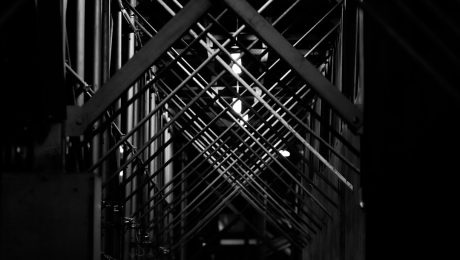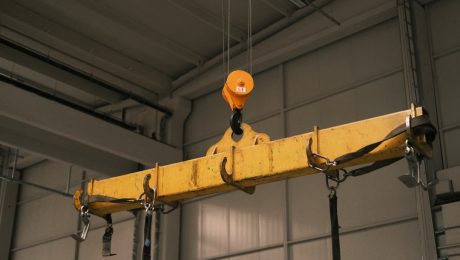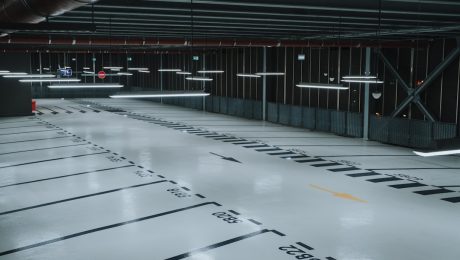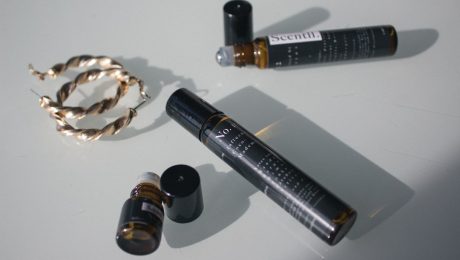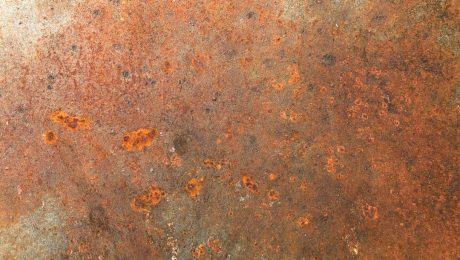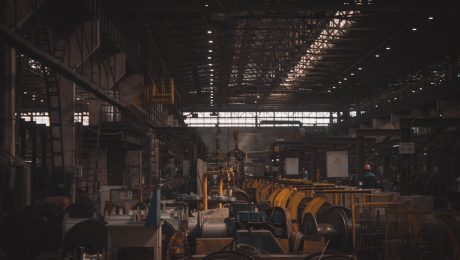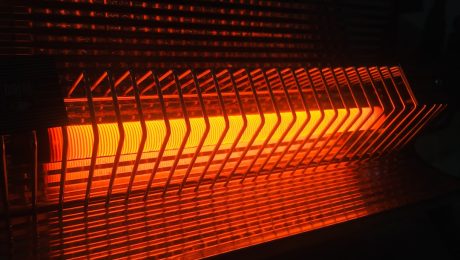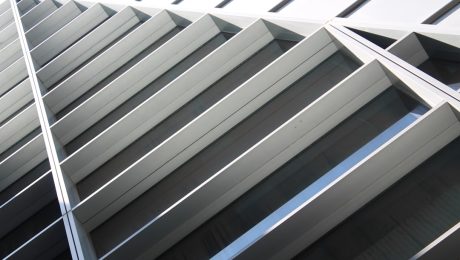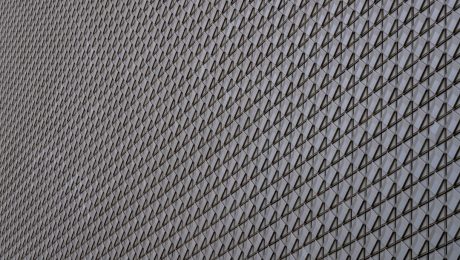body {
font-family: sans-serif;
line-height: 1.6;
margin: 20px;
}
h1, h2, h3 {
color: #333;
}
h1 {
font-size: 2.5em;
}
h2 {
font-size: 2em;
}
h3 {
font-size: 1.5em;
}
In the world of industrial design, structural integrity is paramount. Choosing the right materials and components is crucial for creating robust, reliable, and cost-effective structures. While often overlooked, IPN beams play a significant role in achieving these goals. This comprehensive guide delves into the world of IPN beams, exploring their properties, applications, and advantages in various industrial settings.
Understanding IPN Beams: What They Are and Why They Matter
IPN beams, or Parallel Flange I-Beams, are a type of steel beam characterized by their parallel flanges (the horizontal top and bottom parts) and a web (the vertical connecting part). Unlike other I-beams like HEA or IPE beams, IPN beams boast a constant flange width, making them particularly suitable for applications requiring uniform strength and load distribution. Their parallel flanges simplify design and fabrication, leading to easier connections and reduced material waste. This consistent geometry also makes them ideal for situations where precise dimensions and alignment are critical.
Advantages of Using IPN Beams in Industrial Designs
IPN beams offer several key advantages that make them a popular choice among engineers and designers:
- High Strength-to-Weight Ratio: IPN beams are remarkably strong for their weight, making them efficient for supporting heavy loads without adding excessive bulk. This is crucial in applications where weight is a significant factor, such as in construction, transportation, and machinery.
- Simplified Connections: The parallel flanges simplify welding and bolting processes, reducing fabrication time and costs. This streamlined approach contributes to faster project completion and minimizes labor expenses.
- Precise Dimensions: Their consistent geometry ensures accurate and predictable structural behavior, crucial for designs demanding high precision and repeatability.
- Cost-Effectiveness: While the initial cost might be comparable to other beam types, the ease of fabrication and reduced material waste ultimately contribute to a more cost-effective solution over the entire project lifecycle.
- Versatility: IPN beams can be used in a wide range of applications, from supporting heavy machinery in factories to creating robust frameworks in buildings and bridges.
Common Applications of IPN Beams in Industrial Settings
The versatility of IPN beams makes them suitable for a broad spectrum of industrial applications. Some notable examples include:
- Heavy-duty shelving and racking systems: The strength and parallel flanges of IPN beams make them ideal for supporting heavy loads in warehouses and distribution centers.
- Structural support in industrial buildings: They are frequently used in the construction of factories, workshops, and other industrial structures, providing robust support for roofs, floors, and walls.
- Machinery bases and platforms: IPN beams offer stable and reliable foundations for heavy machinery, ensuring smooth operation and preventing vibrations.
- Bridge construction: Their high strength-to-weight ratio makes them an attractive option for certain bridge designs, contributing to both strength and efficiency.
- Crane runways and support structures: The precision and strength of IPN beams are essential in the design and construction of crane systems, ensuring safe and reliable operation.
Design Considerations When Using IPN Beams
While IPN beams offer many advantages, careful consideration is necessary during the design phase. Key factors to consider include:
- Load calculations: Accurate load calculations are essential to ensure the chosen IPN beam has sufficient capacity to handle the anticipated stresses.
- Span length: The span length significantly impacts the beam’s deflection and stress levels. Proper selection of beam size and support conditions is crucial.
- Support conditions: The type of support (e.g., simply supported, fixed, cantilever) affects the beam’s behavior and the required strength.
- Corrosion protection: Steel beams are susceptible to corrosion; adequate protection through painting, galvanizing, or other methods is essential for long-term durability.
- Connection design: Properly designing connections (welds, bolts) is crucial to ensure the beam’s structural integrity and prevent premature failure.
Choosing the Right IPN Beam for Your Project
Selecting the appropriate IPN beam requires careful consideration of several factors, including the anticipated loads, span length, support conditions, and budget. Consulting with a structural engineer is strongly recommended to ensure the chosen beam meets all safety and performance requirements. Detailed specifications, including dimensions, material properties, and load capacities, are readily available from steel manufacturers. Understanding these specifications is crucial for making informed decisions and ensuring the structural integrity of your project.
In conclusion, IPN beams are a versatile and efficient solution for a wide range of industrial design applications. Their inherent strength, simplified connections, and cost-effectiveness make them a compelling choice for engineers and designers seeking robust and reliable structural components. However, careful consideration of design parameters and consultation with structural experts are essential to ensure optimal performance and safety.
Tags: IPN beams, parallel flange I-beams, industrial design, structural steel, engineering design, steel construction, heavy-duty shelving
The construction industry is undergoing a significant transformation, driven by the need for sustainable, efficient, and cost-effective building solutions. Hybrid construction, a revolutionary approach combining traditional building methods with modern techniques, is at the forefront of this change. This comprehensive guide explores the diverse facets of hybrid construction, examining its benefits, challenges, and future potential.
1. Understanding the Core Principles of Hybrid Construction
Hybrid construction isn’t simply mixing materials; it’s a strategic approach to leverage the strengths of different building systems. It involves integrating traditional materials like timber, brick, or concrete with modern elements such as steel, prefabricated components, or advanced materials like cross-laminated timber (CLT). The goal is to create a structure that’s optimized for specific project requirements, considering factors like speed of construction, cost-effectiveness, sustainability, and structural performance. This approach allows for flexibility in design and material selection, enabling architects and engineers to tailor solutions to unique project needs and site conditions. For example, a project might use a concrete core for structural stability combined with a lightweight timber frame for the external walls, minimizing weight and maximizing energy efficiency.
2. Popular Hybrid Construction Methods and Material Combinations
Several hybrid construction methods are gaining popularity. One common approach involves combining steel frames with precast concrete panels. The steel frame provides structural support and allows for greater flexibility in design, while precast concrete panels offer speed of construction, improved insulation, and reduced on-site labor. Another popular combination is timber framing with CLT panels. CLT, a highly engineered wood product, offers exceptional strength and stiffness, making it ideal for larger structures. This combination delivers a sustainable, aesthetically pleasing, and structurally sound building. Furthermore, concrete and masonry structures can be hybridized by incorporating lightweight steel or timber elements for specific components like roofs or internal partitions, enhancing design flexibility and reducing overall material weight.
3. Advantages of Embracing Hybrid Construction Techniques
Hybrid construction offers numerous advantages over traditional methods. Firstly, it significantly reduces construction time. The use of prefabricated components and efficient building systems minimizes on-site work, accelerating project completion. Secondly, it enhances sustainability. By combining materials strategically, architects can optimize resource use and reduce the environmental impact of the building’s lifecycle. For example, using timber reduces reliance on carbon-intensive concrete. Thirdly, it improves structural performance. Hybrid designs allow for optimized load distribution and increased overall strength. Finally, it offers greater design flexibility. The combination of materials allows for innovative architectural solutions that might not be achievable with traditional methods alone. This leads to more aesthetically pleasing and functional buildings.
4. Addressing the Challenges in Hybrid Construction Projects
Despite its numerous benefits, hybrid construction presents certain challenges. One key challenge is the need for specialized expertise. Successfully integrating different materials and construction techniques requires a skilled workforce with a thorough understanding of each system’s properties and interactions. Another challenge lies in coordinating different contractors and suppliers, especially when dealing with prefabricated components. Effective project management and meticulous planning are crucial to avoid delays and cost overruns. Furthermore, the design process can be more complex, requiring sophisticated software and detailed analysis to ensure structural integrity and compliance with building codes. Finally, initial costs might appear higher due to the need for specialized materials and expertise, but the long-term cost savings often outweigh these initial investments.
5. The Future of Hybrid Construction: Trends and Innovations
The future of hybrid construction is bright, with ongoing research and development focusing on innovative materials and techniques. The increased use of advanced materials like carbon fiber reinforced polymers (CFRP) and high-performance concrete is anticipated. These materials offer enhanced strength-to-weight ratios, leading to lighter, more sustainable structures. Furthermore, the integration of digital technologies, such as Building Information Modeling (BIM) and 3D printing, is streamlining the design and construction process. BIM allows for better coordination and collaboration among stakeholders, while 3D printing enables the creation of complex and customized components with greater precision. Finally, the development of modular and prefabricated systems is expected to further enhance efficiency and reduce construction time, leading to a more sustainable and resilient built environment.
In conclusion, hybrid construction represents a significant advancement in the building industry, offering a pathway toward more sustainable, efficient, and innovative structures. By carefully considering the advantages and challenges, and embracing technological advancements, the construction industry can unlock the full potential of this transformative approach, shaping a more sustainable and resilient future for the built environment.
body { font-family: sans-serif; line-height: 1.6; }
h1, h2, h3 { color: #333; }
img { max-width: 100%; height: auto; }
Steel, the backbone of modern construction and manufacturing, undergoes a dramatic transformation from its raw state to its final, usable form. Understanding the differences between raw and finished steel is crucial for anyone involved in engineering, construction, or manufacturing. This comprehensive guide delves into the key distinctions, exploring their properties, applications, and the processes that bridge the gap between the two.
1. The Birth of Steel: Understanding Raw Steel
Raw steel, also known as pig iron or molten steel, is the initial product of the steelmaking process. It’s produced in a blast furnace through a high-temperature reduction of iron ore with coke and limestone. This process yields a molten metal containing significant impurities like carbon, manganese, silicon, phosphorus, and sulfur. These impurities significantly affect the steel’s properties, making it brittle, weak, and unsuitable for most applications. Raw steel is not directly usable in construction or manufacturing; it requires further refining to become a useful material. Its appearance is typically a shimmering, molten liquid, extremely hot and requiring specialized handling and containment.
2. The Refining Process: From Raw to Finished Steel
The journey from raw steel to finished steel involves a series of crucial refining processes. The primary goal is to reduce the levels of impurities and precisely control the chemical composition to achieve desired properties. Common refining methods include the Basic Oxygen Furnace (BOF) and Electric Arc Furnace (EAF) processes. These processes involve blowing oxygen through the molten steel to oxidize and remove impurities. Alloying elements like chromium, nickel, molybdenum, and vanadium are then added to achieve specific mechanical properties, such as increased strength, corrosion resistance, or ductility. The entire process requires precise control of temperature, oxygen flow, and alloy additions to ensure consistent quality.
3. Properties: A Tale of Two Steels
The differences in properties between raw and finished steel are stark. Raw steel, due to its high impurity content, is brittle, lacks tensile strength, and is prone to corrosion. Its hardness is inconsistent, and it is difficult to shape or work with. Finished steel, on the other hand, exhibits a wide range of tailored properties depending on its composition and processing. It can be incredibly strong, ductile, malleable, and resistant to corrosion, heat, or wear. This versatility makes it suitable for a vast array of applications.
4. Applications: Where Each Steel Finds Its Place
Raw steel’s primary application is as an intermediate product in the steelmaking process. It is not used directly in manufacturing or construction. Finished steel, however, finds applications across numerous industries. High-strength steel is used in construction (skyscrapers, bridges), automotive manufacturing (car bodies, chassis), and machinery. Stainless steel, known for its corrosion resistance, is used in kitchen appliances, medical instruments, and chemical processing equipment. Tool steel, with its high hardness and wear resistance, is used in cutting tools and dies. The diverse applications of finished steel highlight the value of the refining process.
5. Cost and Availability: Weighing the Factors
Raw steel is generally less expensive than finished steel due to its unrefined state and lack of processing. However, its limited usability means that the cost savings are often negated by the additional expense and complexity of refining it into a usable form. Finished steel, while more expensive, offers a wide range of readily available forms, including sheets, plates, bars, pipes, and structural shapes, catering to various manufacturing and construction needs. The availability of finished steel in specific grades and forms is a key factor in project planning and cost estimation.
In conclusion, the transformation from raw steel to finished steel is a crucial process that unlocks the material’s immense potential. Understanding the differences between these two stages is essential for anyone working with steel, ensuring the selection of the right material for the right application.
SEO Tags:
- Raw Steel
- Finished Steel
- Steel Manufacturing
- Steel Properties
- Steel Applications
Choosing the right pipe for your project is crucial. Understanding the distinctions between hot-finished and heat-treated pipes is essential for ensuring structural integrity, longevity, and optimal performance. This comprehensive guide delves into the manufacturing processes, properties, applications, and selection criteria of both types, empowering you to make informed decisions.
1. The Manufacturing Process: Hot-Finishing vs. Heat Treating
Both hot-finished and heat-treated pipes begin with a similar process: the rolling of steel billets at high temperatures. However, their journeys diverge significantly after this initial step. Hot-finished pipes undergo a continuous rolling process at high temperatures, followed by cooling in air. This process results in a relatively coarse grain structure. The final dimensions are achieved through this hot rolling, minimizing the need for further machining. Heat-treated pipes, on the other hand, may or may not begin with hot finishing. The crucial difference lies in the subsequent heat treatment process. This involves carefully controlled heating and cooling cycles to alter the microstructure of the steel, enhancing its mechanical properties. Different heat treatments, such as annealing, normalizing, quenching, and tempering, can be applied depending on the desired outcome.
2. Mechanical Properties: Strength, Ductility, and Hardness
The differences in manufacturing processes directly impact the mechanical properties of the pipes. Hot-finished pipes generally exhibit good ductility (ability to deform before fracture) and weldability, making them suitable for applications where bending or forming is required. However, their yield strength and tensile strength are typically lower compared to heat-treated pipes. Heat-treated pipes, due to the controlled microstructure modification, possess significantly higher yield strength, tensile strength, and hardness. This enhanced strength makes them ideal for applications demanding high structural integrity and resistance to stress and wear. The specific mechanical properties of heat-treated pipes depend heavily on the type of heat treatment employed.
3. Applications: Where Each Pipe Type Excels
The distinct mechanical properties dictate the suitability of each pipe type for specific applications. Hot-finished pipes are commonly used in applications where high strength isn’t the primary concern, such as low-pressure pipelines for water, gas distribution, and general construction. Their cost-effectiveness and good weldability make them a popular choice for large-scale projects. Heat-treated pipes, with their superior strength and hardness, find applications in high-pressure systems, oil and gas pipelines, pressure vessels, and structural components where high resistance to stress and fatigue is crucial. They are also frequently used in demanding environments where corrosion resistance is a vital factor.
4. Cost Considerations: Balancing Performance and Budget
The cost of hot-finished and heat-treated pipes varies significantly. Hot-finished pipes are generally less expensive due to the simpler manufacturing process. This makes them a cost-effective solution for many applications. Heat-treated pipes, requiring more complex and controlled manufacturing steps, command a higher price. The extra cost, however, is justified by the enhanced mechanical properties and suitability for high-performance applications where failure could have significant consequences. The decision often involves balancing the required performance characteristics with the budget constraints of the project.
5. Selecting the Right Pipe: Key Factors to Consider
Choosing between hot-finished and heat-treated pipes requires careful consideration of several factors. The intended application, operating pressure, temperature, and environmental conditions are paramount. The required mechanical properties, such as yield strength, tensile strength, and hardness, must be assessed against the specifications of the project. Furthermore, factors such as weldability, corrosion resistance, and the overall cost must be factored into the decision-making process. Consulting with experienced engineers and material specialists can ensure that the optimal pipe type is selected for the specific requirements of the application.
Ultimately, the choice between hot-finished and heat-treated pipes depends on a careful evaluation of the project’s needs. Understanding the differences in their manufacturing processes, mechanical properties, and applications is crucial for making informed decisions that ensure safety, reliability, and cost-effectiveness.
SEO Tags:
hot-finished pipes, heat-treated pipes, steel pipes, pipe manufacturing, mechanical properties
Galvanized steel, a ubiquitous material in construction, infrastructure, and manufacturing, owes its widespread use to its exceptional corrosion resistance. This post delves into the science behind this remarkable property, exploring its mechanisms, applications, limitations, and comparisons with other corrosion-resistant materials. Understanding the intricacies of galvanized steel’s performance is crucial for selecting the right material for various applications.
The Science Behind Galvanized Steel’s Corrosion Resistance
The superior corrosion resistance of galvanized steel stems from the protective zinc coating applied to the base steel. This coating acts as a sacrificial anode, meaning it preferentially corrodes instead of the underlying steel. This process, known as galvanic corrosion, relies on the electrochemical properties of zinc and iron. Zinc is more electropositive than iron, meaning it readily loses electrons. When exposed to moisture and oxygen, zinc oxidizes, forming a zinc oxide layer that acts as a barrier, preventing further corrosion. This barrier protects the steel from environmental factors that cause rusting, such as moisture, oxygen, and various chemicals.
The thickness of the zinc coating directly influences the longevity of the protection. Heavier coatings offer more substantial and prolonged protection against corrosion, extending the lifespan of the galvanized steel product. The specific galvanizing process employed also impacts the coating’s quality and performance. Hot-dip galvanizing, a common method, produces a thicker, more uniform coating compared to electrogalvanizing.
Applications Where Galvanized Steel Excels
The exceptional corrosion resistance of galvanized steel makes it ideal for a wide range of applications, particularly in outdoor environments where exposure to harsh weather conditions is unavoidable. Common applications include:
- Construction: Roofing, cladding, structural steel components, fencing, and guardrails.
- Automotive: Body panels, chassis components, and exhaust systems (though often combined with other corrosion protection methods).
- Infrastructure: Bridges, pipelines, transmission towers, and highway guardrails.
- Manufacturing: Industrial equipment, storage tanks, and various machinery components.
- Household appliances: Washing machines, dryers, and other appliances with exposed metal parts.
In each of these applications, the long-term durability and minimal maintenance requirements of galvanized steel provide significant economic and practical advantages.
Limitations and Considerations of Galvanized Steel
While galvanized steel offers excellent corrosion resistance, it’s not without limitations. Understanding these limitations is crucial for appropriate material selection and design considerations:
- Hydrogen Embrittlement: The galvanizing process can introduce hydrogen into the steel, potentially leading to hydrogen embrittlement, a form of steel degradation. This is more of a concern with high-strength steels.
- Zinc Flaking or Peeling: Damage to the zinc coating, caused by scratches, abrasion, or improper handling, can expose the underlying steel to corrosion. This is why proper handling and installation are essential.
- Alkaline Environments: While generally resistant, galvanized steel can exhibit reduced corrosion resistance in highly alkaline environments.
- Specific Chemical Exposure: Certain chemicals can react with the zinc coating, potentially compromising its protective properties. Careful consideration is needed when selecting galvanized steel for applications involving chemical exposure.
- High-Temperature Applications: The zinc coating’s effectiveness can be reduced at very high temperatures, potentially leading to faster corrosion.
Comparing Galvanized Steel with Other Corrosion-Resistant Materials
Galvanized steel competes with several other corrosion-resistant materials, each with its own set of advantages and disadvantages. A comparison helps in selecting the most appropriate material for specific applications:
- Stainless Steel: Offers superior corrosion resistance in many environments but is generally more expensive than galvanized steel.
- Aluminum: Lightweight and corrosion-resistant, but may not be as strong as steel in some applications.
- Powder Coating: Provides excellent corrosion protection, but requires a smooth base surface and may be less durable than galvanizing in harsh environments.
- Paint Coatings: Relatively inexpensive but requires regular maintenance and repainting to maintain its effectiveness.
The choice depends on factors like cost, required strength, environmental conditions, and the specific chemical exposure expected.
Maintaining and Extending the Lifespan of Galvanized Steel
While galvanized steel is inherently corrosion-resistant, proper maintenance can further extend its lifespan and protect against premature degradation. Key maintenance practices include:
- Careful Handling and Installation: Avoid scratching or damaging the zinc coating during handling and installation.
- Regular Inspection: Periodically inspect galvanized steel structures for signs of damage or corrosion.
- Prompt Repair: Address any damage to the zinc coating promptly to prevent further corrosion.
- Proper Cleaning: Regular cleaning can remove contaminants that might accelerate corrosion.
By following these simple maintenance practices, you can significantly extend the service life of your galvanized steel components, maximizing their value and minimizing replacement costs.
In conclusion, galvanized steel’s exceptional corrosion resistance is a result of the sacrificial protection offered by the zinc coating. Understanding its mechanisms, applications, limitations, and maintenance requirements is crucial for making informed material selection decisions. By choosing galvanized steel wisely and implementing proper maintenance, you can ensure long-lasting and reliable performance in a wide range of applications.
The steel industry, a cornerstone of global infrastructure and manufacturing, is undergoing a remarkable transformation driven by relentless research and development (R&D). This isn’t just about incremental improvements; it’s about fundamentally altering the properties and capabilities of steel, leading to lighter, stronger, more sustainable, and more versatile materials. This post delves into the exciting world of steel R&D, exploring the key areas driving innovation and the impact on various industries.
Advanced Alloying for Enhanced Properties
The quest for superior steel begins with alloying – the precise addition of other elements to modify the base iron-carbon structure. Modern R&D focuses on exploring novel alloying combinations to achieve specific performance enhancements. For instance, the addition of rare earth elements can significantly improve machinability, while carefully controlled additions of manganese, chromium, and molybdenum can boost strength, toughness, and corrosion resistance. Researchers are also investigating the potential of nano-sized alloying particles to further refine the microstructure and enhance properties at a fundamental level. This includes exploring the use of advanced characterization techniques like transmission electron microscopy (TEM) and atom probe tomography (APT) to understand the effects of these additions at the atomic scale, leading to more precise control over the final material properties.
Revolutionizing Steel Manufacturing Processes
Beyond material composition, advancements in steel manufacturing processes are equally crucial. Traditional methods are being refined and innovative techniques are emerging. For example, the development of advanced casting and rolling technologies allows for the production of complex shapes with tighter tolerances and improved surface finishes. Additive manufacturing, or 3D printing, is revolutionizing the creation of bespoke steel components with intricate designs previously impossible to achieve through conventional methods. This allows for the creation of lightweight components with optimized geometries, reducing material waste and enhancing performance. Furthermore, the integration of artificial intelligence (AI) and machine learning (ML) into manufacturing processes is enabling real-time optimization, predictive maintenance, and improved quality control, leading to greater efficiency and reduced production costs.
Sustainable Steel Production: A Green Revolution
The environmental impact of steel production is a major concern, prompting significant R&D efforts towards sustainable practices. Researchers are actively exploring methods to reduce carbon emissions associated with iron ore reduction, the most energy-intensive stage of steelmaking. This includes investigating alternative reduction processes, such as hydrogen-based reduction, which could drastically cut greenhouse gas emissions. Moreover, the recycling of steel scrap is gaining prominence, with advancements in sorting and processing technologies improving the quality and usability of recycled steel. The development of closed-loop recycling systems, where steel is continuously recycled without significant loss of quality, is a key focus area for sustainable steel production. This circular economy approach minimizes environmental impact and reduces reliance on virgin materials.
Tailored Steel for Specific Applications
The versatility of steel allows for its customization to meet the unique demands of various applications. R&D plays a crucial role in developing specialized steel grades with optimized properties for specific industries. For example, high-strength low-alloy (HSLA) steels are increasingly used in automotive applications to improve fuel efficiency by reducing vehicle weight. In the construction industry, advanced high-strength steels are enabling the design of taller and more slender structures, pushing the boundaries of architectural possibilities. The development of corrosion-resistant steels is crucial for applications in harsh environments, such as offshore structures and chemical plants. This targeted approach ensures that the right steel is used for the right job, maximizing performance and minimizing material costs.
The Future of Steel: Smart Materials and Beyond
The future of steel R&D is brimming with exciting possibilities. The development of “smart” steels, incorporating sensors and actuators, is opening new avenues for structural health monitoring and self-healing materials. These materials can detect damage or stress and initiate self-repair mechanisms, enhancing safety and extending lifespan. Furthermore, research into advanced surface treatments and coatings is improving the corrosion resistance, wear resistance, and aesthetic appeal of steel products. The integration of nanotechnology and advanced materials science is pushing the boundaries of steel’s capabilities, leading to materials with unprecedented strength, ductility, and other desirable properties. This constant push for innovation ensures that steel will remain a vital material for years to come, adapting to the evolving needs of society.
The advancements in steel R&D are not just incremental improvements; they represent a paradigm shift in material science and manufacturing. From sustainable production methods to the creation of smart materials with unprecedented properties, the future of steel is bright, promising a wealth of innovations that will shape the world around us.
SEO Tags:
- Steel R&D
- Steel Innovation
- Advanced Steel Alloys
- Sustainable Steel Production
- Steel Manufacturing Processes
body {
font-family: sans-serif;
line-height: 1.6;
}
h1, h2, h3 {
color: #333;
}
img {
max-width: 100%;
height: auto;
}
In the world of construction and engineering, energy efficiency is paramount. Minimizing heat loss and maximizing thermal comfort are key objectives, and the choice of materials plays a crucial role. Thermally insulated steel profiles have emerged as a powerful solution, offering a compelling blend of strength, durability, and energy efficiency. This comprehensive guide explores the fascinating world of these innovative profiles, delving into their properties, applications, and future potential.
Understanding the Need for Thermal Insulation in Steel Profiles
Steel, while incredibly strong and versatile, is an excellent conductor of heat. This means that in buildings constructed with standard steel frames, significant heat loss can occur through what are known as “cold bridges.” These are areas where heat readily escapes from the building’s interior, leading to energy waste, discomfort, and even the potential for condensation and mold growth. Thermally insulated steel profiles address this problem by incorporating insulation materials directly into the profile’s design, effectively breaking the cold bridges and significantly improving the building’s thermal performance.
Manufacturing Processes: How Thermally Insulated Steel Profiles are Made
The manufacturing process for thermally insulated steel profiles typically involves several steps. First, a layer of insulating material, such as polyurethane foam, polyisocyanurate foam, or mineral wool, is applied to a steel profile. This insulation core is then encased in a further layer of steel, creating a composite structure. Different manufacturing techniques exist, including continuous casting and roll forming, which ensure the tight bond between the steel and insulation, preventing air gaps that could compromise the thermal performance. Precision is key; the manufacturing process needs to ensure the insulation is evenly distributed to maximize its effectiveness.
Superior Thermal Performance: Breaking Down the U-Values
The effectiveness of thermally insulated steel profiles is often measured by their U-value. The U-value represents the rate of heat transfer through a material; a lower U-value indicates better insulation. Compared to standard steel profiles, thermally insulated versions boast significantly lower U-values, resulting in substantial reductions in energy consumption for heating and cooling. This improvement in thermal performance translates into considerable cost savings for building owners over the lifespan of the structure, making them a financially attractive option. Furthermore, the reduced thermal bridging leads to a more consistent indoor temperature, enhancing comfort and reducing the risk of condensation problems.
Diverse Applications: Where Thermally Insulated Steel Profiles Excel
The versatility of thermally insulated steel profiles makes them suitable for a wide range of applications in the construction industry. They are commonly used in:
- Curtain walls: Providing excellent thermal performance and aesthetic appeal in high-rise buildings.
- Windows and doors: Enhancing energy efficiency and reducing drafts.
- Roofing systems: Minimizing heat loss through the roof and improving overall building insulation.
- Industrial buildings: Providing a robust and energy-efficient solution for large-scale structures.
- Cold storage facilities: Maintaining consistent low temperatures with minimal energy consumption.
Their strength and durability also make them ideal for applications in harsh environments or areas prone to seismic activity.
Future Trends and Innovations in Thermally Insulated Steel Profiles
The field of thermally insulated steel profiles is constantly evolving. Research and development efforts are focused on:
- Improved insulation materials: Exploring new materials with even higher thermal resistance and better environmental properties.
- Enhanced manufacturing processes: Optimizing production techniques to further improve the bond between the steel and insulation, and reduce manufacturing costs.
- Sustainable materials: Incorporating recycled materials and reducing the environmental impact of manufacturing.
- Smart integration: Integrating sensors and other technologies to monitor thermal performance and optimize energy consumption.
- Advanced design features: Developing more sophisticated profile designs to further minimize thermal bridging and enhance aesthetic appeal.
These innovations promise even greater energy efficiency, sustainability, and design flexibility in the future.
Thermally insulated steel profiles represent a significant advancement in building technology, offering a compelling combination of structural integrity and energy efficiency. Their widespread adoption is contributing to the creation of more sustainable and comfortable buildings, while also offering long-term cost savings for building owners.
Tags: Thermally Insulated Steel Profiles, Steel Profiles, Thermal Insulation, Energy Efficiency, Cold Bridges, Construction Materials, Building Envelope
Navigating the complex world of steel procurement can be a daunting task. With a vast array of grades, specifications, and suppliers, making informed decisions that balance cost, quality, and timely delivery requires specialized expertise. This is where technical consulting for steel buyers becomes invaluable. This comprehensive guide explores how expert advice can significantly improve your steel purchasing process and ultimately, your bottom line.
1. Optimizing Steel Selection: Matching Material to Application
Choosing the right steel grade is paramount. Incorrect selection can lead to premature failure, costly rework, and project delays. Technical consultants possess in-depth knowledge of various steel grades, their mechanical properties (tensile strength, yield strength, ductility, hardness), and their suitability for specific applications. They analyze your project requirements, considering factors such as stress levels, environmental conditions, and desired lifespan. This ensures you select the most appropriate and cost-effective steel grade, avoiding overspending on unnecessarily high-performance materials.
For example, a consultant can help you determine whether a high-strength low-alloy (HSLA) steel is necessary for a structural application or if a less expensive carbon steel will suffice. They can also guide you through the complexities of different steel processing techniques, such as hot-rolled, cold-rolled, or galvanized steel, and their impact on the final product’s properties and cost.
2. Navigating Steel Specifications and Standards
The steel industry operates under a complex web of standards and specifications (e.g., ASTM, ASME, EN). Understanding these standards is critical for ensuring consistent quality and compliance. Technical consultants provide expert interpretation of these specifications, helping you define clear and accurate requirements for your steel purchases. They can assist in translating your project needs into precise technical language, minimizing misunderstandings with suppliers and ensuring you receive the exact material you need.
This includes navigating the nuances of different certifications and quality control procedures, ensuring the steel you receive meets the highest standards of safety and performance. They can also help you identify potential discrepancies or ambiguities in specifications, preventing costly errors down the line.
3. Streamlining the Steel Supply Chain: Sourcing and Negotiation
Efficient procurement involves more than just selecting the right steel. Technical consultants can optimize your entire steel supply chain, from identifying reliable suppliers to negotiating favorable contracts. They possess extensive knowledge of the steel market, allowing them to identify potential sources that offer the best combination of price, quality, and delivery reliability. Their expertise in contract negotiation helps secure favorable terms and conditions, protecting your interests and minimizing risks.
This includes managing lead times, coordinating logistics, and mitigating potential supply chain disruptions. Their market insights can help you anticipate price fluctuations and make strategic purchasing decisions to optimize inventory levels and minimize storage costs.
4. Implementing Robust Quality Control Measures
Ensuring the quality of the received steel is crucial to prevent defects and project delays. Technical consultants can help you implement comprehensive quality control measures throughout the procurement process. This includes specifying appropriate testing methods, interpreting test results, and addressing any quality issues that may arise. They can also assist in developing robust inspection procedures to verify that the delivered steel conforms to the agreed-upon specifications.
This might involve overseeing material testing at the mill or during incoming inspection at your facility. They can help you understand the meaning of various test reports and ensure that the results align with your project requirements. This proactive approach minimizes the risk of using substandard materials.
5. Cost Optimization and Value Engineering in Steel Procurement
Cost control is a major concern for any steel buyer. Technical consultants help you achieve cost optimization without compromising quality. They perform value engineering analyses, identifying opportunities to reduce costs without sacrificing performance. This might involve exploring alternative steel grades, optimizing designs to minimize material usage, or negotiating better pricing with suppliers. They can also help you identify hidden costs associated with material handling, processing, and waste disposal.
By leveraging their expertise in material science, market dynamics, and supply chain management, consultants can develop cost-effective strategies that ensure the best possible return on investment for your steel purchases. This holistic approach ensures that your project remains within budget without compromising on quality or safety.
In conclusion, engaging a technical consultant for steel procurement offers significant advantages. From optimizing material selection to streamlining the supply chain and implementing robust quality control, their expertise can lead to substantial cost savings, improved quality, and reduced project risks. Don’t navigate the complex world of steel buying alone – partner with an expert to unlock the full potential of your steel purchasing strategy.
Tags: steel buying, technical consulting, steel procurement, steel specifications, material selection
body {
font-family: sans-serif;
line-height: 1.6;
}
h1, h2, h3 {
color: #333;
}
img {
max-width: 100%;
height: auto;
}
The engineering world is constantly seeking materials that offer superior strength, lightweight properties, and corrosion resistance. Carbon fiber-coated steel pipes represent a significant advancement in this pursuit, combining the inherent strength and durability of steel with the exceptional lightweight and high tensile strength of carbon fiber. This innovative combination opens up a wide array of applications across diverse industries.
The Science Behind the Strength: Material Properties and Composition
Carbon fiber-coated steel pipes leverage the synergistic properties of both constituent materials. The steel core provides the foundational strength and stiffness, while the carbon fiber coating enhances several key characteristics. The steel core, typically made from high-strength grades like API 5L X42 or X52, offers excellent compressive strength and resistance to buckling. The carbon fiber layer, usually composed of unidirectional or woven fibers embedded in a resin matrix (epoxy is common), drastically increases the tensile strength, flexural rigidity, and fatigue resistance of the pipe. This composite structure results in a material that is significantly stronger and lighter than steel pipes of comparable diameter and wall thickness.
The precise composition of the carbon fiber and resin matrix can be tailored to meet specific application requirements. For example, using high-modulus carbon fiber yields a stiffer pipe, while using a high-tensile strength fiber results in a pipe with superior resistance to breakage under tension. The resin system plays a crucial role in bonding the carbon fiber to the steel substrate and protecting the fibers from environmental degradation.
Manufacturing Processes: A Blend of Precision and Innovation
The manufacturing of carbon fiber-coated steel pipes involves a sophisticated process that requires precision and expertise. Several techniques are employed, including filament winding, pultrusion, and prepreg wrapping. Filament winding involves precisely wrapping continuous carbon fiber strands around a steel mandrel, creating a layer-by-layer build-up of the composite coating. Pultrusion involves pulling continuous fibers through a resin bath and then through a shaping die to create a profile, which is then bonded to the steel pipe. Prepreg wrapping uses pre-impregnated carbon fiber sheets that are wrapped around the steel pipe and cured in an autoclave under controlled temperature and pressure.
The choice of manufacturing method depends on factors such as pipe diameter, desired thickness of the carbon fiber coating, and production volume. Quality control throughout the process is crucial to ensure the proper adhesion between the carbon fiber and steel, as well as the integrity of the composite structure.
Applications Across Industries: Where Innovation Meets Demand
The unique properties of carbon fiber-coated steel pipes make them highly suitable for a variety of applications where high strength-to-weight ratio, corrosion resistance, and durability are critical. These include:
- Oil and Gas Industry: Transporting high-pressure fluids and gases in harsh environments.
- Chemical Processing: Handling corrosive chemicals and preventing leaks.
- Aerospace: Constructing lightweight yet strong components for aircraft and spacecraft.
- Automotive: Creating high-performance drive shafts and other structural components.
- Infrastructure: Building durable and lightweight bridges, pipelines, and other structures.
The ability to customize the properties of the carbon fiber coating allows for the tailoring of the pipe to specific application requirements, further expanding its versatility.
Advantages Over Traditional Steel Pipes: A Comparative Analysis
Compared to traditional steel pipes, carbon fiber-coated steel pipes offer several significant advantages:
- Increased Strength and Stiffness: The carbon fiber coating significantly enhances the tensile strength and flexural rigidity of the pipe, allowing for the use of thinner walls while maintaining structural integrity.
- Reduced Weight: The lighter weight of the carbon fiber coating reduces transportation and installation costs, while also decreasing the overall load on supporting structures.
- Enhanced Corrosion Resistance: The carbon fiber coating provides an effective barrier against corrosion, extending the lifespan of the pipe, especially in harsh environments.
- Improved Fatigue Resistance: The composite structure exhibits superior fatigue resistance compared to steel alone, reducing the risk of failure due to cyclic loading.
- Increased Durability: The combination of materials results in a pipe that is more resistant to damage from impacts and other external forces.
These advantages translate into significant cost savings over the long term, due to reduced maintenance, extended lifespan, and improved efficiency.
Future Trends and Innovations: Shaping the Next Generation
The field of carbon fiber-coated steel pipes is constantly evolving. Research and development efforts are focused on improving the manufacturing process, exploring new types of carbon fibers and resin systems, and expanding the range of applications. Future innovations may include:
- Advanced Manufacturing Techniques: Utilizing additive manufacturing (3D printing) to create complex pipe geometries and customized coatings.
- Smart Sensors Integration: Embedding sensors within the pipe to monitor its condition and detect potential problems.
- Self-Healing Materials: Developing self-healing capabilities to repair minor damage and extend the lifespan of the pipe.
- Sustainable Materials: Utilizing recycled carbon fiber and bio-based resins to reduce the environmental impact of manufacturing.
These advancements promise to further enhance the performance and sustainability of carbon fiber-coated steel pipes, solidifying their role as a key material in various industries.
Tags: Carbon Fiber Pipes, Steel Pipes, Composite Pipes, Carbon Fiber Coating, Pipe Manufacturing
In the realm of modern construction, energy efficiency is paramount. Minimizing heat loss and maximizing thermal comfort are key objectives, and the choice of building materials plays a crucial role. Thermally insulated steel profiles are emerging as a significant player in achieving these goals, offering a compelling blend of strength, durability, and superior thermal performance. This comprehensive guide delves into the intricacies of these innovative profiles, exploring their benefits, applications, and future prospects.
Understanding the Mechanics: How Thermal Insulation Works in Steel Profiles
Steel, while incredibly strong, is also an excellent conductor of heat. This means that without insulation, steel structures can contribute significantly to heat loss in buildings, leading to higher energy bills and discomfort. Thermally insulated steel profiles address this issue by incorporating a layer of insulating material within the steel structure itself. This typically involves a core of polyurethane, polyisocyanurate, or other high-performance insulating foams, encased within a robust steel shell. The insulating core acts as a thermal break, significantly reducing the flow of heat through the profile. This principle is crucial in minimizing “cold bridges,” areas where heat escapes rapidly due to uninsulated conductive elements in the building envelope.
Different manufacturing processes lead to variations in the placement and thickness of the insulation core. Some profiles feature a continuous core running the length of the profile, while others may have segmented insulation. The choice of insulation material and its density also impact the overall thermal performance of the profile. High-density insulation generally provides better thermal resistance, but it can also increase the overall weight and cost of the profile.
Superior Thermal Performance: Breaking Down U-Values and Thermal Breaks
The effectiveness of thermally insulated steel profiles is often measured by their U-value (formerly k-value). The U-value represents the rate of heat transfer through a material, expressed in watts per square meter-kelvin (W/m²K). A lower U-value indicates better thermal insulation. Thermally insulated steel profiles boast significantly lower U-values compared to their non-insulated counterparts. This translates to reduced energy consumption for heating and cooling, leading to substantial cost savings over the building’s lifespan.
The incorporation of a thermal break within the profile is key to achieving these low U-values. The insulating core acts as a barrier, preventing the direct transfer of heat between the inner and outer steel surfaces. This is especially crucial in applications where the profile is exposed to both internal and external environments, such as window frames or curtain walls.
Diverse Applications: Where Thermally Insulated Steel Profiles Excel
The versatility of thermally insulated steel profiles makes them suitable for a wide range of applications in the construction industry. Their strength and durability are ideal for load-bearing structures, while their superior thermal performance contributes to energy efficiency. Some key applications include:
- Window and Door Frames: These profiles create energy-efficient windows and doors, minimizing heat loss and improving indoor comfort.
- Curtain Walls: In high-rise buildings and commercial structures, thermally insulated steel profiles form the basis of energy-efficient curtain wall systems.
- Structural Framing: These profiles can be used in various structural applications where both strength and thermal performance are required.
- Cold Storage Facilities: Their excellent insulation properties make them suitable for cold storage applications, minimizing energy consumption for refrigeration.
- Prefabricated Buildings: The use of these profiles in prefabricated construction speeds up the building process while maintaining high energy efficiency.
Manufacturing Processes: A Look Behind the Scenes
The manufacturing process of thermally insulated steel profiles involves several key steps. First, the insulating core is produced, typically by injecting polyurethane or polyisocyanurate foam into a mold. Then, the steel sections are formed, often through roll-forming or extrusion processes. Finally, the steel sections are precisely fitted around the insulating core, creating a complete, thermally insulated profile. The precision of these steps is critical to ensure a high-quality, durable, and thermally efficient final product. Advanced manufacturing techniques ensure the secure bonding of the insulation to the steel, preventing gaps or voids that could compromise thermal performance.
Quality control measures throughout the manufacturing process are essential to maintain consistent thermal performance and structural integrity. Regular testing and inspections are implemented to ensure the profiles meet the required standards and specifications.
The Future of Thermally Insulated Steel Profiles: Innovation and Sustainability
The demand for thermally insulated steel profiles is continuously growing, driven by increasing environmental awareness and stricter building regulations. Ongoing research and development focus on improving the thermal performance, durability, and sustainability of these profiles. This includes exploring new insulation materials with even better thermal properties, developing more efficient manufacturing processes, and incorporating recycled content into the profiles. The future likely holds further innovations in design and manufacturing, leading to even more energy-efficient and environmentally friendly building solutions.
The integration of smart technologies, such as embedded sensors for monitoring thermal performance, is also a promising area of development. These advancements will not only enhance the efficiency of buildings but also contribute to the development of smart, sustainable cities.
SEO Tags: Thermally Insulated Steel Profiles, Steel Thermal Breaks, Energy Efficient Steel, U-Value Steel Profiles, Sustainable Building Materials

